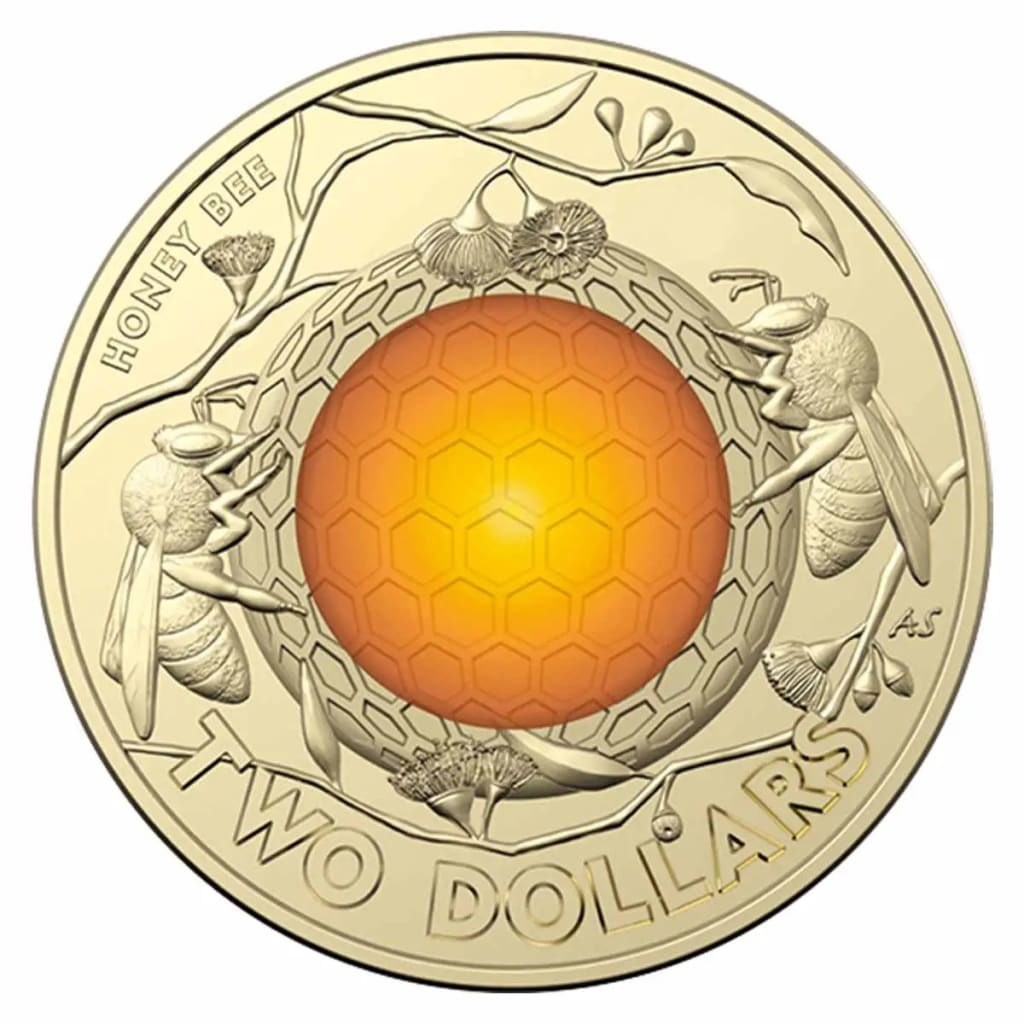Honey bees have showed up on coins for centuries, alluding to a well established connect between sweetness and worth
The Buzz of Currency: Tracing the Symbolic Connection Between Bees, Sweetness, and Worth

In 2022, the Imperial Australian Mint gave a $2 coin beautified with bumble bees. Around 2400 years sooner, a mint in the realm of Macedon had a similar thought, making a silver obol coin with a honey bee stepped on one side.
Throughout the long term between these two occasions, cash exhibiting an emblematic connection somewhere in the range of honey and cash is shockingly normal.
In a new report in Australian Coin Survey, I follow the honey bee through numismatic history - and propose a logical justification for why our minds could normally draw an association between the melliferous bugs and the theoretical thought of significant worth.
An Illustrious Australian Mint 2022 $2 coin addressing a long time starting from the acquaintance of the bumble bee with Australia.
What is currency , and for what reason is it significant?
Cash is a store of significant worth, and can go about as a mode of trade for labor and products. Cash is an actual sign of cash, so coins are a strong portrayal of significant worth.
Coins have played focal part in numerous networks to empower effective exchange since antiquated times. Their sturdiness makes them significant time containers.
Antiquated Malta was renowned for its honey. The cutting edge 3 Mils coin (1972-81) commends this set of experiences with pictures of a honey bee and honeycomb. As per the data card gave with the coin set:
"A honey bee and honeycomb are displayed on the 3 Mils coin, representing the way that honey was utilized as money in Old Malta."
In old Greece, honey bees were utilized on the absolute earliest coins made in Europe. A silver Greek obol coin stamped in Macedon between 412 BCE and 350 BCE, presently housed in the English Gallery, shows a honey bee on one side of the coin.
Honey bees likewise highlight on coins stamped somewhere else in the old Greek world, for example, a bronze coin printed in Ephesus dated between 202 BCE and 133 BCE.
The utilization of honey bees on old coins stretched out for a long time, including broadly circled bronze coins, and new assortments .
Why we could like honey bees on coins
Why have honey bees showed up so frequently on coins? One way to deal with this question comes from the field of neuro-style, which looks to comprehend our preferences by understanding the essential mind processes that support tasteful appreciation.
According to this viewpoint, it appears to be reasonable the sweet taste of honey - which demonstrates the huge measure of sugar it conveys - advances positive brain action related with honey bees and honey.
To be sure, primatologist Jane Goodall once recommended that getting fatty nourishment from honey bee honey might have been a significant stage in the mental improvement of primates.
Our cerebrum may subsequently be pre-adjusted to enjoying honey bees because of their relationship with the sweet taste of honey. Early use of honey bees on coins might have been a practical delineation of the connection between a known worth (honey) and another type of cash - coins as cash.
The honey bee on present day coins
The utilization of honey bees as a plan include has continued from old to present day times. A bumble bee visiting a blossom is displayed on a progression of 10-centesimi bronze coins gave in Italy from 1919 to 1937.
(By the way, the world's last supply of unadulterated Italian bumble bees is found in Australia, on Kangaroo Island, which was pronounced a safe-haven for Ligurian honey bees by a demonstration of parliament in 1885.)
All the more as of late, a 20-seniti coin from the Pacific country of Tonga shows 20 bumble bees flying out of a hive. This coin was important for a series started by the Food and Farming Association of the Unified Countries to advance maintainable rural and social improvement all over the planet.
Honey bees are important here on the grounds that their pollinating endeavors add to around 33% of the food expected to take care of the world, with a worth in overabundance of US$200 billion every year, and they're undermined by environmental change and other natural variables
Honey bees on coins, today and tomorrow
Public attention to honey bees and natural supportability likely could be factors in the ongoing interest in honey bee coins. The variety of nations involving honey bees as a plan include over the whole history of coins proposes individuals have esteemed the relationship with honey bees as vital for our own success for quite a while.
In Australia, the 2022 bumble bee $2 coin is important for a series created by the Imperial Australian Mint. In 2019, the Perth Mint in Western Australia additionally delivered coins and stamps celebrating local honey bees.
Not withstanding the downfall of money, honey bee coins actually seem, by all accounts, to be continuing forward. The humming buddies of human culture are probably going to be a significant subject for coin plan however long coins keep on being utilized.
About the Creator
Enjoyed the story? Support the Creator.
Subscribe for free to receive all their stories in your feed. You could also pledge your support or give them a one-off tip, letting them know you appreciate their work.





Comments (1)
Need for bees? Great work! Good job!